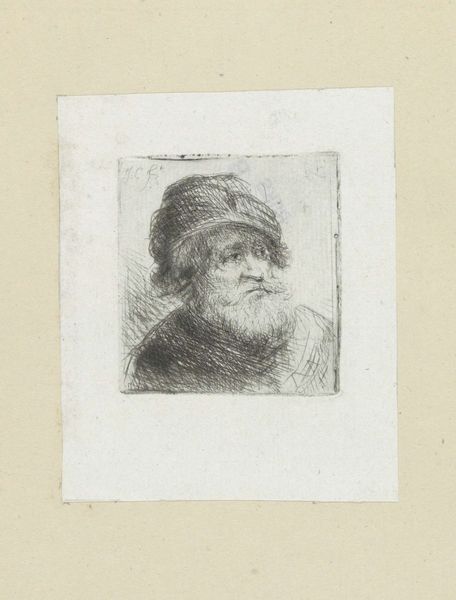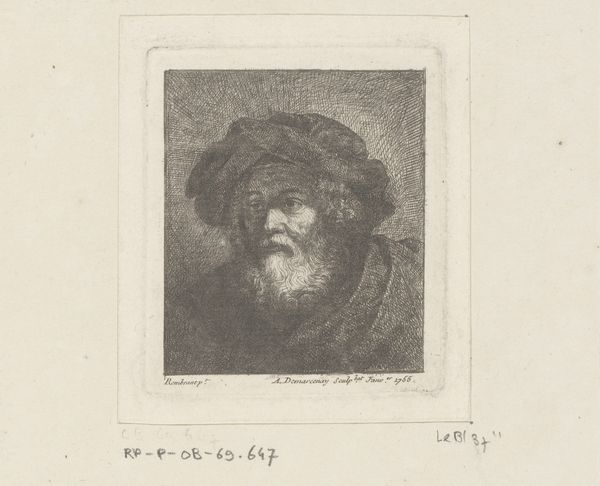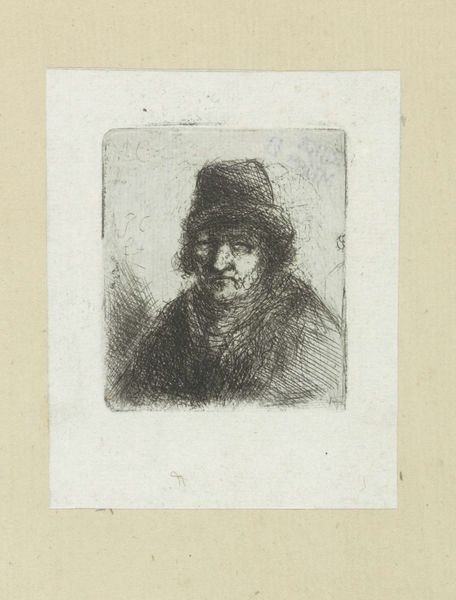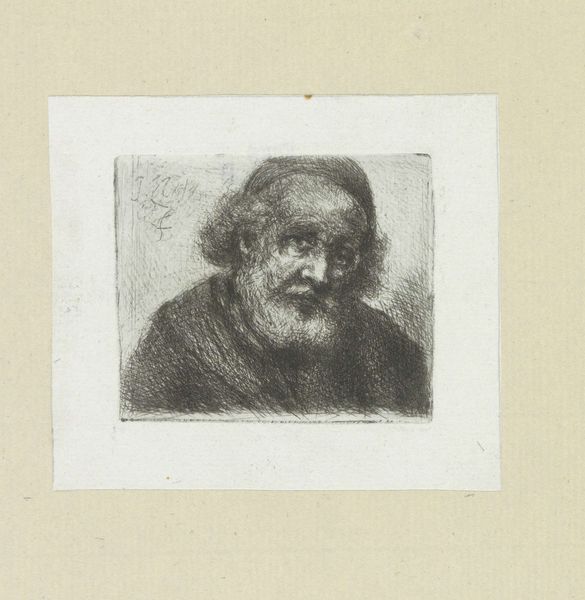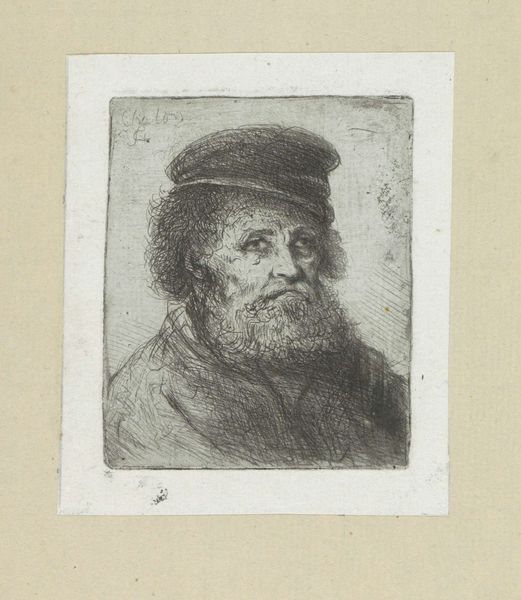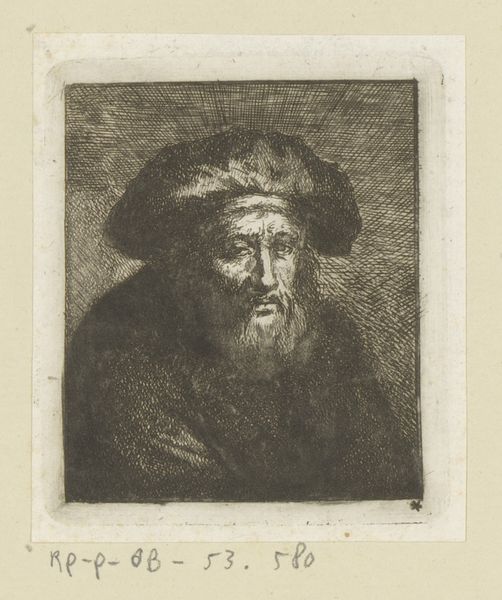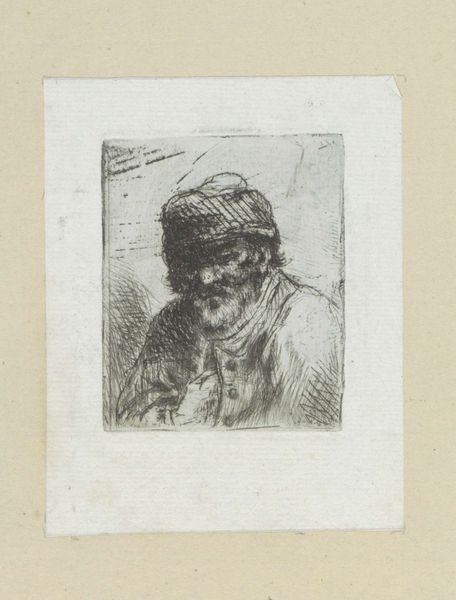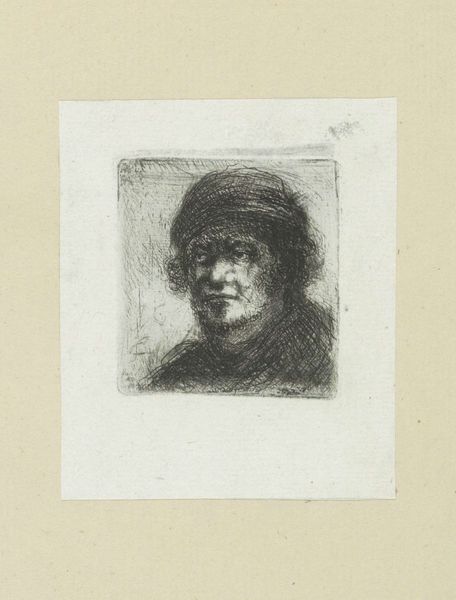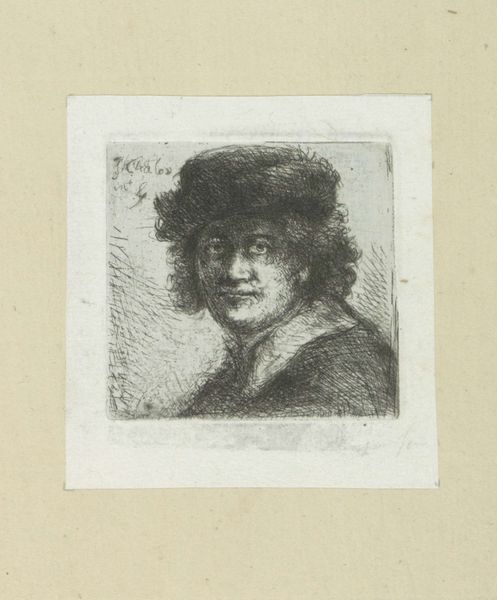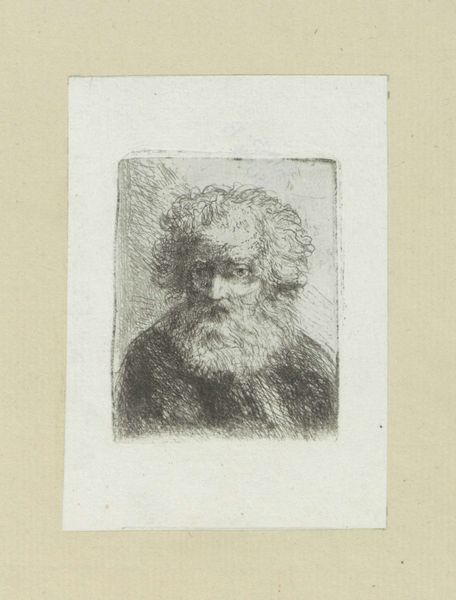
Dimensions: height 103 mm, width 97 mm
Copyright: Rijks Museum: Open Domain
This print, *Jonge man en bebaarde man*, was made by Jan Chalon in the late 18th century, using a technique called etching. With etching, the artist covers a metal plate with a waxy, protective layer, then scratches an image into it. The plate is then immersed in acid, which bites into the exposed lines. This process is repeated for different line weights, building up the composition. The plate is inked, wiped clean, and then put through a printing press, leaving the image on the paper. Notice how Chalon uses these etched lines to create areas of light and shadow. This is all about labor, with the acid and the artist both working on the metal plate. The resulting print could be widely distributed, made accessible through this mechanical process. Ultimately, understanding the labor and materials involved gets us closer to the meaning of the image.
Comments
No comments
Be the first to comment and join the conversation on the ultimate creative platform.
